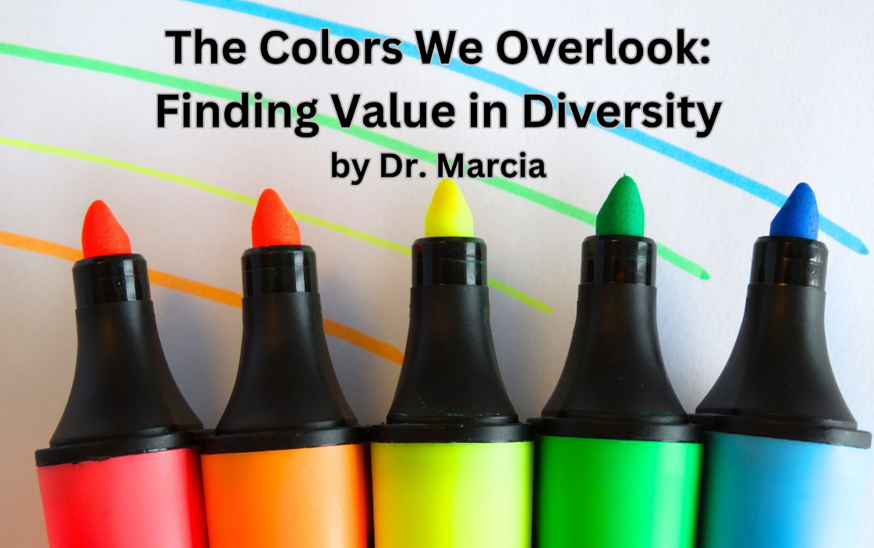Have you ever wondered why we so often reach for what’s familiar without a second thought? What seems like a small, automatic choice may reveal more about us than we realize. Recently, I conducted an informal experiment during a meeting. As participants walked into the room, they were greeted with a small but deliberate choice: a table with highlighters laid out in five distinct colors—pink, orange, yellow, green, and blue. As people gathered, they casually picked up the color of their choice before proceeding to find their seat. Most people didn’t give it much thought. Yellow, the most familiar and perhaps the least surprising option, quickly became the crowd’s favorite. It was a choice that seemed insignificant at the moment. Still, as I observed, it became clear that this simple act mirrored something much larger. Despite having readily available alternatives, we often tend to stick with what we know. This correlation highlights the tendency to remain within our comfort zones, even when other options are easily accessible.
The outcome of the experiment, though not surprising, was revealing. The yellow highlighter didn’t stand out because it was the most effective or preferred by any practical measure. Instead, it was a comfortable choice driven by familiarity. For decades, yellow has become the default highlighter in classrooms, offices, and homes. This familiarity creates an unconscious bias, making the yellow highlighter the safe option, one that demands little reflection or risk. This unconscious bias, rooted in our comfort with the familiar, often guides our decisions, even when other options may be more effective or beneficial.
Our inclination toward the familiar reveals a lot about how we interact with the world. In the same way that the participants were drawn to the yellow highlighter, we frequently make decisions in life that keep us within our comfort zone. The faces we choose to surround ourselves with, the perspectives we listen to, and even the spaces we occupy are decisions that are often made without question and shaped by the comfortable defaults society has embedded in us. It’s not that the other highlighters lacked value; they weren’t chosen because they required a step outside of what was familiar.
In discussions about diversity, we often emphasize visible distinctions—race, gender, ethnicity—but diversity runs deeper than appearances. It encompasses the array of experiences, perspectives, and talents that each individual brings to the table. Just as we instinctively reach for the yellow highlighter, we often stick to familiar narratives, overlooking the wealth of perspectives that challenge us to think differently. In doing so, we risk missing out on the full spectrum of human experience.
Diversity, in its truest sense, challenges these defaults. It requires us to look beyond what we know to see the value in “colors” we might not instinctively pick—whether as ideas, experiences, or the people around us. The highlighters, with their varying hues, serve as a metaphor for the spectrum of human experience. Yet, much like the less-chosen green or blue, diversity often requires a conscious step beyond the familiar to be appreciated fully. It is not the lack of value in these perspectives, but rather the comfort of staying with what we know that prevents us from exploring them.
To truly embrace diversity requires a conscious effort to pause, reflect, and make intentional choices. It means stepping beyond what feels easy and embracing the unknown. There is value in every voice, every story, and every viewpoint—whether it’s as subtle as green or as striking as blue. The strength of diversity lies in its variety and in the wealth of experiences that enrich our collective understanding and push us toward growth.
As the meeting concluded and the highlighters were tucked away, I reflected on the subtle significance of those small choices. What if we all made a conscious effort to choose differently, to step beyond the default options that society presents us? The true lesson of diversity lies not in simply acknowledging its existence, but in actively seeking it out. Just as we may reach for a yellow highlighter out of habit, so too might we default to familiar perspectives in life. But with a bit of intention, we open ourselves to a world that’s as colorful and varied as the highlighters that once lay on that table.
Dr. Marcia is an ordained minister, board-certified chaplain, and author of Team Us: A Playbook for Healthy Relationships. She is currently working on another self-help book and a children’s series. In her free time, she enjoys writing leisurely and savoring the simple joys of life.

